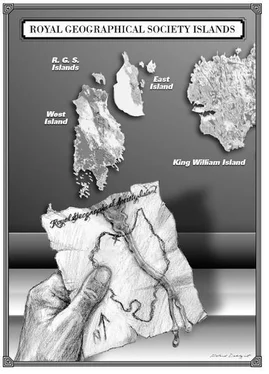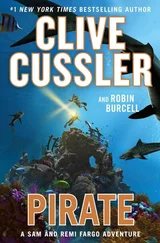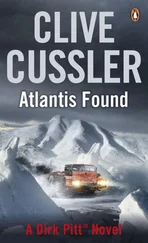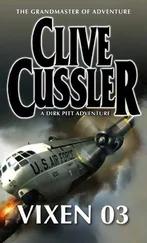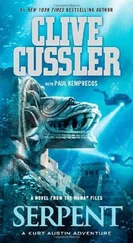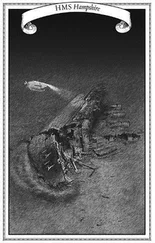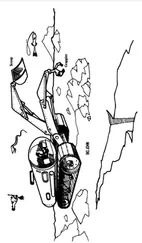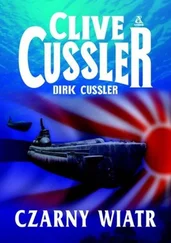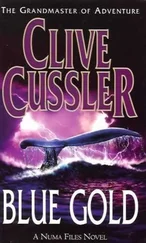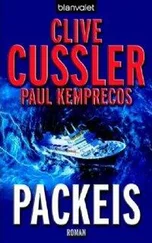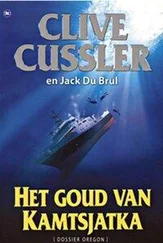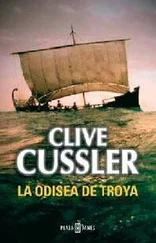“What’s our plan of attack once we reach the wreck site?”
“I figure we have three objectives,” Pitt replied, having earlier planned the dive. “First, and most obvious, is to try and identify the wreck. We know that the Erebus had a role in the ruthenium that was obtained by the Inuit. We don’t know if the same holds true for the Terror . If the wreck is the Terror , there may well be no clues whatsoever aboard. The second objective is to penetrate the hold and determine if there are any significant quantities of the mineral still there. The third objective is the most tenuous. That would be to search the Great Cabin and the captain’s cabin to determine if the ship’s log still exists.”
“You’re right,” Giordino agreed. “The log of the Erebus would be the holy grail. It surely would tell us where the ruthenium was found. Sounds like a long shot to hope that it survived intact, though.”
“Admittedly, but far from impossible. The log was probably a heavy leather-bound book stored in a chest or locker. In these cold waters, there’s at least a chance that it’s still in one piece. Then it would be up to the preservationists to determine if it could be conserved and ultimately deciphered.”
Giordino eyed the depth gauge. “We’re coming up on nine hundred and fifty feet.”
“Adjusting for neutral buoyancy,” Pitt replied, regulating the submersible’s variable ballast tank. Their descent slowed to a crawl as they passed the thousand-foot mark, and, minutes later, a flat, rocky seafloor appeared beneath them. Pitt engaged the propulsion controls and drove the vessel forward, skimming a few feet off the bottom.
The craggy brown seafloor was mostly devoid of life, a cold and empty world not far removed from the frozen lands protruding above the surface. Pitt turned the submersible into the current, guiding the vessel in a sweeping series of S turns. Though the Narwhal had been stationed directly above the wreck, Pitt knew that they had drifted considerably south during their descent.
Giordino was the first to spot the wreck, pointing out a dark shadow on their starboard flank. Pitt steered the Bloodhound hard to the right until the stately wreck materialized under their spotlights.
Before them sat a nineteenth-century wooden sailing ship. It was one of the most remarkable shipwrecks Pitt had ever seen. The frigid Arctic waters had retained the ship’s condition in a near-perfect state of preservation. Covered in a fine layer of silt, the ship appeared fully intact, from its bowsprit to its rudder. Only the masts, which had slipped from the deck during the long plunge to the bottom, lay out of place, dangling over the side railing.
Mired in its desolate eternal mooring, the ancient ship exuded a forlorn aura. To Pitt, the ship appeared like a tomb in an empty graveyard. He felt an odd chill thinking about the men who had sailed her, then been forced to abandon their home of three years under desperate conditions.
Slowly engaging the submersible, Pitt cruised in a tight arc around the vessel while Giordino activated a forward-mounted video camera. The hull timbers still appeared thick and sound, and in places where the silt was thin they could see a coat of black paint still adhering to the wood. As they rounded the stern, Giordino was startled to see the tips of a propeller protruding from the sand.
“They had steam power?” he asked.
“A supplement to sail, once they reached the ice pack,” Pitt confirmed. “Both ships were equipped with coal-fired locomotive engines installed for added propulsion through the thinner sea ice. The steam engines were also used to provide heat for the ship’s interior.”
“No wonder Franklin had the confidence to try to plow through Victoria Strait in late summer.”
“What he may not have had enough of by that point in the expedition was coal. Some figure they ran short of their coal supplies, and that may have accounted for the ships becoming trapped in the ice.”
Pitt pushed the submersible around to the ship’s port side, anxious to find lettering on the bow that might reveal the ship’s name. But he was disappointed to find instead the only real evidence of damage to the ship. The hull beneath the bow was blown out in a jagged mass of timbers, caused by the constricting ice. The damage had extended to the topside deck when the weakened section had struck the seafloor, causing the timbers above to buckle. A broad section of the bow on both sides of the centerline had crumpled like an accordion just a few feet astern of the vessel’s blunt prow. Pitt patiently hovered off both sides of the bow as Giordino brushed aside the silt with an articulated arm, but no identifying script work could be found.
“I guess this one wants to play hard to get,” Pitt muttered.
“Like too many of the women I’ve dated,” Giordino grimaced. “I guess we’ll have to take Dahlgren up on his ship’s bell offer after all.”
Pitt elevated the submersible above the deck, then swept toward the stern. The deck was remarkably clear of debris, the ship obviously configured in its winter hibernation mode when it was abandoned. The only unusual item was a large canvas structure that lay across the deck amidships. Pitt knew from the historical accounts that a tentlike covered structure was set up on the deck in winter so that the crew could escape the interior confines of the ship for exercise.
Pitt continued aft, where he found the helmsman’s station and the large wooden ship’s wheel, still standing upright and attached to the rudder. A small bell was mounted nearby, but, after careful scrutiny, he could find no markings on it.
“I know where the ship’s bell is,” Pitt stated, cruising back toward the bow. Hovering over the tangled mass of timbers and debris where the bow had buckled, he pointed down.
“It’s in the garbage pit here.”
“Must be,” Giordino agreed with a nod. “It’s not our day. Or night.” He checked a console of dials in front of him. “We have just under four hours of battery power remaining. Do you want to rummage around for the bell or have a look inside?”
“Let’s take Rover for a walk. There’s one upside to this damage, I suppose. It will allow us easier access to the interior.”
Pitt edged the Bloodhound to a clear section of the deck, then carefully set the submersible down. When the ship’s timbers gave no indication of stress, he powered off the propulsion motors.
In the copilot seat, Giordino was busy engaging another device. Tucked between the submersible’s support skids was a small, tethered ROV the size of a small suitcase. Equipped with a micro-sized video camera and small array of lights, it could maneuver into the smallest corners of the shipwreck.
Jockeying a controlling joystick, Giordino guided the Rover out from its cradle and toward the open section of the deck. Pitt flipped down an overhead monitor, which displayed the live video feed from the device. Methodically weaving above and around the debris, Giordino finally found a large gap in the deck and guided the ROV into the bowels of the ship.
Pitt unrolled a cutaway diagram of the Erebus and tried to track the ROV’s location as it moved beneath the main deck. The ship had two levels belowdecks, plus a dank hold where the engine, boiler, and coal reserves were housed below the waterline. The living and dining areas for both crew and officers were located on the lower deck, one level down from the main deck. Beneath the lower deck was the orlop deck, which was strictly a storage area for provisions, tools, and ship’s spares.
“You should be dropping near the galley,” Pitt remarked. “It’s adjacent to the crew’s living quarters, which is a sizable compartment.”
Читать дальше
